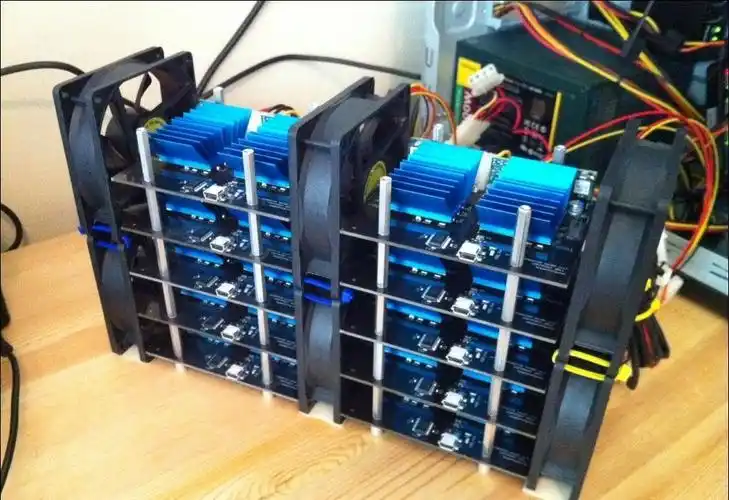The digital frontier of cryptocurrency mining beckons, promising riches gleaned from complex algorithms and powerful machines. But like any expedition into the unknown, it comes with its own set of challenges. Your mining rig, the digital workhorse diligently crunching numbers, can sometimes falter. And when it does, especially when it’s miles away in a hosting facility, troubleshooting remotely becomes a crucial skill. Fear not, intrepid miner! This guide will equip you with the knowledge and tools to diagnose and rectify issues from afar, keeping your hash rate humming and your profits flowing.
Before diving into the technical trenches, let’s establish a solid foundation. Remote troubleshooting hinges on preparation. Ensure your mining rig is configured for remote access *before* a problem arises. This typically involves enabling SSH (Secure Shell) or a similar remote access protocol. Furthermore, install remote management software like TeamViewer or AnyDesk. These tools allow you to visually interact with your rig’s desktop, providing a graphical interface for monitoring and control. Don’t underestimate the importance of a reliable internet connection for both your rig and your remote access device. A flaky connection will only compound your troubleshooting woes.
The first sign of trouble is often a drop in hash rate or a complete cessation of mining activity. Your mining pool dashboard is your first port of call. Check if your rig is even reporting its hash rate. If it’s offline, the problem likely lies with power, network connectivity, or a complete system crash. If the hash rate is unusually low, it indicates a potential issue with individual GPUs, overclocking settings, or the mining software itself. Many pools offer alerts or notifications that can proactively inform you of any disruptions.
Next, delve into the rig’s logs. Mining software generates logs that record every action and error. These logs are invaluable for pinpointing the source of the problem. Familiarize yourself with the location of your mining software’s log files (typically within the software’s installation directory). Open these logs and search for error messages, warnings, or unusual activity. Common culprits include GPU errors, pool connection issues, or software crashes. Learn to decipher these messages; they often provide clues about the nature of the problem and potential solutions. Remember, context is key. Look for errors that coincide with the onset of the issue.

Overclocking can significantly boost your mining rig’s performance, but it also increases the risk of instability. If you’re experiencing frequent crashes or errors, try reducing your overclock settings. Gradually decrease the core clock and memory clock of your GPUs until the system stabilizes. Monitor the temperature of your GPUs closely. Overheating is a common cause of instability and can lead to hardware damage. If your GPUs are consistently running hot, consider improving the cooling by adding more fans, reapplying thermal paste, or adjusting the fan speed settings.
Sometimes, the issue isn’t software-related but a hardware malfunction. GPUs are susceptible to failure, especially under the constant stress of mining. If you suspect a faulty GPU, try disabling one GPU at a time and see if the problem resolves itself. This process of elimination can help you identify the culprit. Check the power supply unit (PSU) as well. An insufficient or failing PSU can cause instability and crashes. Ensure your PSU has enough wattage to power all components of your mining rig, with some headroom for safety.
Regular maintenance is crucial for preventing problems and extending the lifespan of your mining rig. Dust accumulation can lead to overheating and reduced performance. Clean your rig regularly with compressed air, paying particular attention to the GPUs and fans. Check the cables and connections to ensure they are secure. Loose connections can cause intermittent issues that are difficult to diagnose. Periodically update your mining software and drivers to the latest versions. These updates often include bug fixes and performance improvements.
If you’ve exhausted all other troubleshooting steps and are still unable to resolve the issue, it may be time to seek professional help. Contact the hosting facility’s support team or a qualified computer technician. They have the expertise and tools to diagnose and repair more complex hardware problems. Before contacting support, gather as much information as possible about the issue, including error messages, logs, and troubleshooting steps you’ve already taken. This will help them diagnose the problem more quickly and efficiently.
Mining cryptocurrencies like Bitcoin, Dogecoin, and Ethereum can be a profitable venture. Understanding the intricacies of mining rigs, hardware requirements, and the software configurations is essential. Properly configuring your mining rig can solve half of all potential problems. The digital economy is a very hot topic and has changed dramatically over the past few years. Cryptocurrencies will continue to evolve and change the way we see value and investment.

Remote troubleshooting is an indispensable skill for any serious cryptocurrency miner. By following these steps and adopting a proactive approach to maintenance, you can minimize downtime, maximize your hash rate, and keep your mining operation running smoothly. Remember, patience and persistence are key. Troubleshooting can be a frustrating process, but with a systematic approach and a willingness to learn, you can overcome any challenge and reap the rewards of the digital gold rush.
Leave a Reply